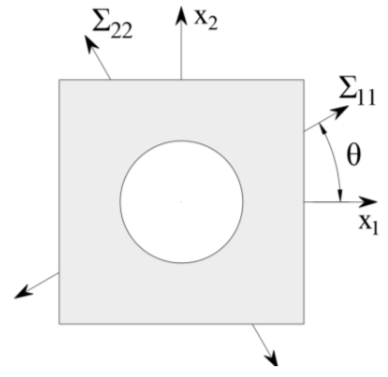Limit state analysis of asymmetrical microstructures based on yield design computational homogenization approach
Author affiliations
DOI:
https://doi.org/10.15625/0866-7136/17985Keywords:
homogenization analysis, periodic, polynomial interpolation, limit analysis, SOCPAbstract
This paper presents a novel formulation for the computational homogenization analysis of materials at the limit state. The polynomial interpolations are employed to impose the periodic boundary conditions for the fluctuating term of the displacement field when using arbitrary finite element meshes. Second-order cone programming provides an efficient solution to solve the resulting optimization problems, and accurate load multipliers can be obtained with the minimum computational cost. Several asymmetrical material models are investigated to perform the efficiency of the proposed method. The collapse mechanisms of the representative volume elements are also presented.
Downloads
References
J. C. Michel, H. Moulinec, and P. Suquet. Effective properties of composite materials with periodic microstructure: a computational approach. Computer Methods in Applied Mechanics and Engineering, 172, (1999), pp. 109–143.
V. Kouznetsova, W. A. M. Brekelmans, and F. P. T. Baaijens. An approach to micromacro modeling of heterogeneous materials. Computational Mechanics, 27, (2001), pp. 37–48.
C. Miehe and A. Koch. Computational micro-to-macro transitions of discretized microstructures undergoing small strains. Archive of Applied Mechanics (Ingenieur Archiv), 72, (2002), pp. 300–317.
M. G. D. Geers, V. G. Kouznetsova, and W. A. M. Brekelmans. Multi-scale computational homogenization: Trends and challenges. Journal of Computational and Applied Mathematics, 234, (2010), pp. 2175–2182.
K. Terada, M. Hori, T. Kyoya, and N. Kikuchi. Simulation of the multi-scale convergence in computational homogenization approaches. International Journal of Solids and Structures, 37, (2000), pp. 2285–2311.
F. Larsson, K. Runesson, S. Saroukhani, and R. Vafadari. Computational homogenization based on a weak format of micro-periodicity for RVE-problems. Computer Methods in Applied Mechanics and Engineering, 200, (2011), pp. 11–26.
J. M. Tyrus, M. Gosz, and E. DeSantiago. A local finite element implementation for imposing periodic boundary conditions on composite micromechanical models. International Journal of Solids and Structures, 44, (2007), pp. 2972–2989.
Z. Yuan and J. Fish. Toward realization of computational homogenization in practice. International Journal for Numerical Methods in Engineering, 73, (3), (2007), pp. 361–380.
V.-D. Nguyen, E. B´echet, C. Geuzaine, and L. Noels. Imposing periodic boundary condition on arbitrary meshes by polynomial interpolation. Computational Materials Science, 55, (2012), pp. 390–406.
R. Wang, L. Zhang, D. Hu, C. Liu, X. Shen, C. Cho, and B. Li. A novel approach to impose periodic boundary condition on braided composite RVE model based on RPIM. Composite Structures, 163, (2017), pp. 77–88.
V. Carvelli, G. Maier, and A. Taliercio. Kinematic limit analysis of periodic heterogeneous media. CMES (Computer Modelling in Engineering & Sciences), 1, (2), (2000), pp. 19–30.
H. Li, Y. Liu, X. Feng, and Z. Cen. Limit analysis of ductile composites based on homogenization theory. Proceedings of the Royal Society of London. Series A: Mathematical, Physical and Engineering Sciences, 459, (2003), pp. 659–675.
C. V. Le, P. H. Nguyen, H. Askes, and D. C. Pham. A computational homogenization approach for limit analysis of heterogeneous materials. International Journal for Numerical Methods in Engineering, 112, (2017), pp. 1381–1401.
P. L. H. Ho, C. V. Le, and P. H. Nguyen. Kinematic yield design computational homogenization of micro-structures using the stabilized iRBF mesh-free method. Applied Mathematical Modelling, 91, (2021), pp. 322–334.

Downloads
Published
How to Cite
License

This work is licensed under a Creative Commons Attribution-ShareAlike 4.0 International License.









